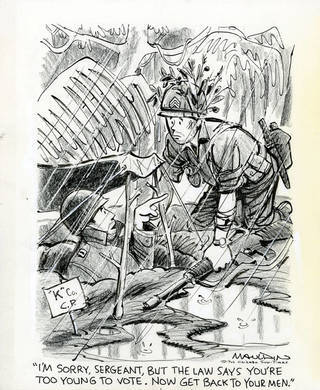Political Cartoons Simplicity: They Were Simply Effective
By Brandon Snyder
The counter-movements result from most wars, however, the Vietnam War is perhaps the best example of this. President Lindon B. Johnson initially received domestic support when he took office in 1963, but his embrace of the “domino theory” contributed to his downfall. He deployed troops to Southeast Asia to stop communist expansion. Soon after, he lost support and sparked an incredible anti-war movement. This took many forms which included political cartoons.
Political cartoons were published in newspapers such as the Washington Post and the New York Herald Tribune. While historians dub the Vietnam War as a television war, newspapers remained impactful. Newspapers were accessible and the public consumed them regularly. As a result, most Americans saw political cartoons.
The format of political cartoons made them effective. They facilitated the ability of American citizens in understanding a different viewpoint. Bill Mauldin was a famous political cartoonist throughout World War II and continued his work for the Vietnam War. Using his cartoons as a catalyst, he poked fun at many of America’s major issues during the war. In "I'm sorry, sergeant, but the law says you're too young to vote. Now get back to your men.", Mauldin notes how soldiers deployed to Vietnam often remained below the legal voting age. Soldiers averaged the age of 19 while one needed to be over 21 to vote. Such observations appealed to the common sense of Mauldin’s audience. Most political cartoons are formatted to do that. They provide a clear image and short dialogue which shines a light on a political problem.
While Americans today remember the conflict in Vietnam as a “television war,” political cartoons proved equally important in provoking public debate.


